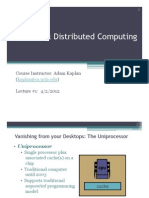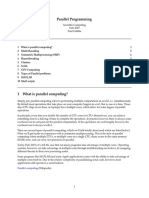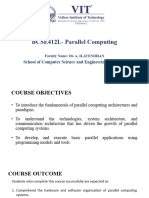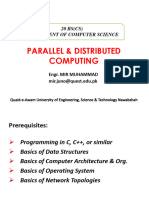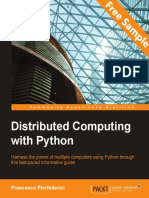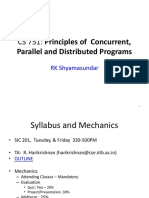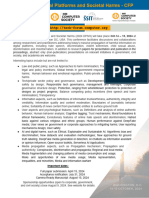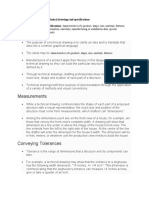0% found this document useful (0 votes)
7 views13 pagesPDC Lecture 2
The lecture by Ms. Maryam Arshad covers the fundamentals of parallel and distributed computing, emphasizing its relevance in modern technology and nature. It outlines three major levels of parallel processing: thread level, core level, and node level, along with their respective programming models and tools like CUDA and OpenMP. The document also highlights the advantages of parallel computing over serial computing, such as time and cost efficiency, and discusses the programming approaches for parallel computers.
Uploaded by
furqan aslamCopyright
© © All Rights Reserved
We take content rights seriously. If you suspect this is your content, claim it here.
Available Formats
Download as PDF, TXT or read online on Scribd
0% found this document useful (0 votes)
7 views13 pagesPDC Lecture 2
The lecture by Ms. Maryam Arshad covers the fundamentals of parallel and distributed computing, emphasizing its relevance in modern technology and nature. It outlines three major levels of parallel processing: thread level, core level, and node level, along with their respective programming models and tools like CUDA and OpenMP. The document also highlights the advantages of parallel computing over serial computing, such as time and cost efficiency, and discusses the programming approaches for parallel computers.
Uploaded by
furqan aslamCopyright
© © All Rights Reserved
We take content rights seriously. If you suspect this is your content, claim it here.
Available Formats
Download as PDF, TXT or read online on Scribd
/ 13










